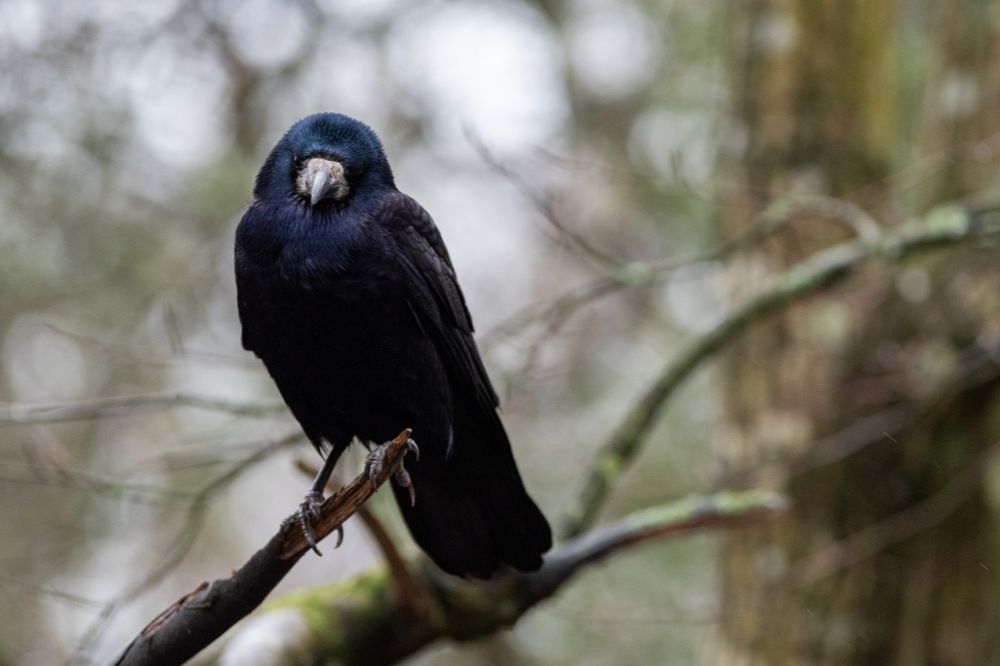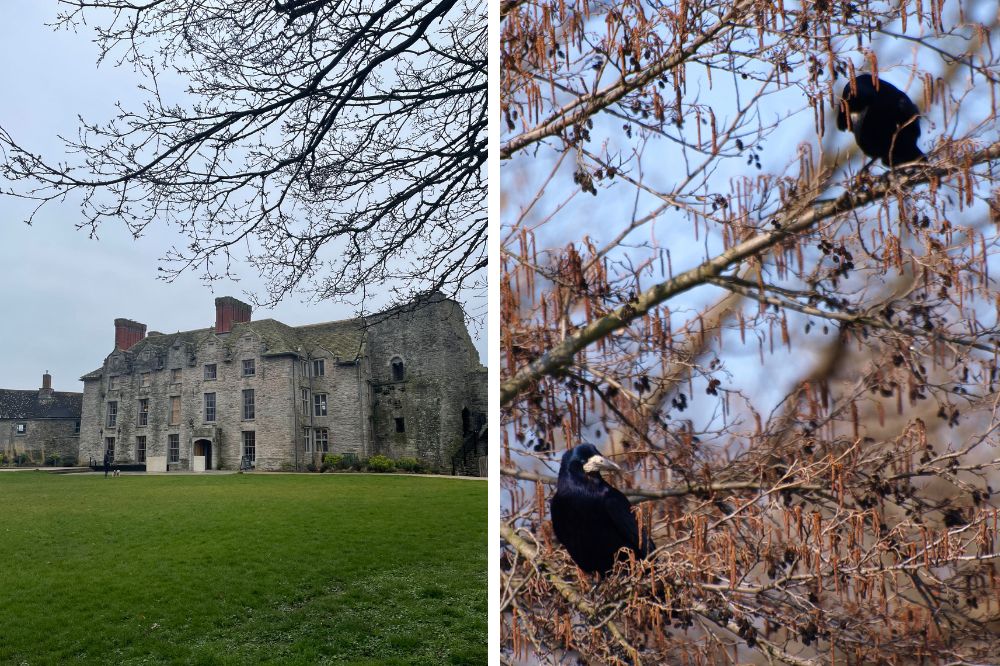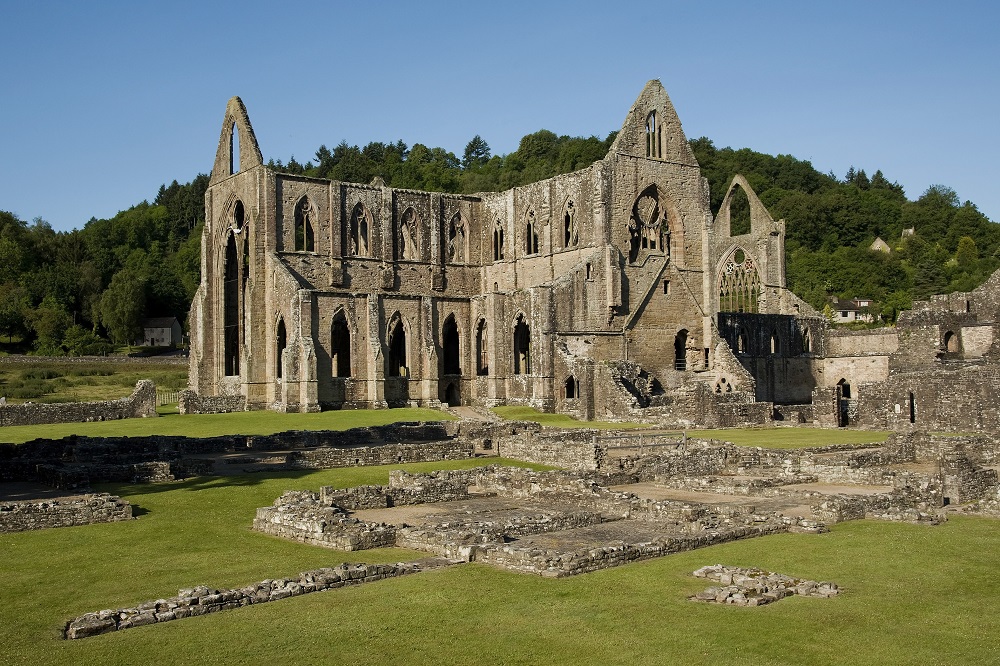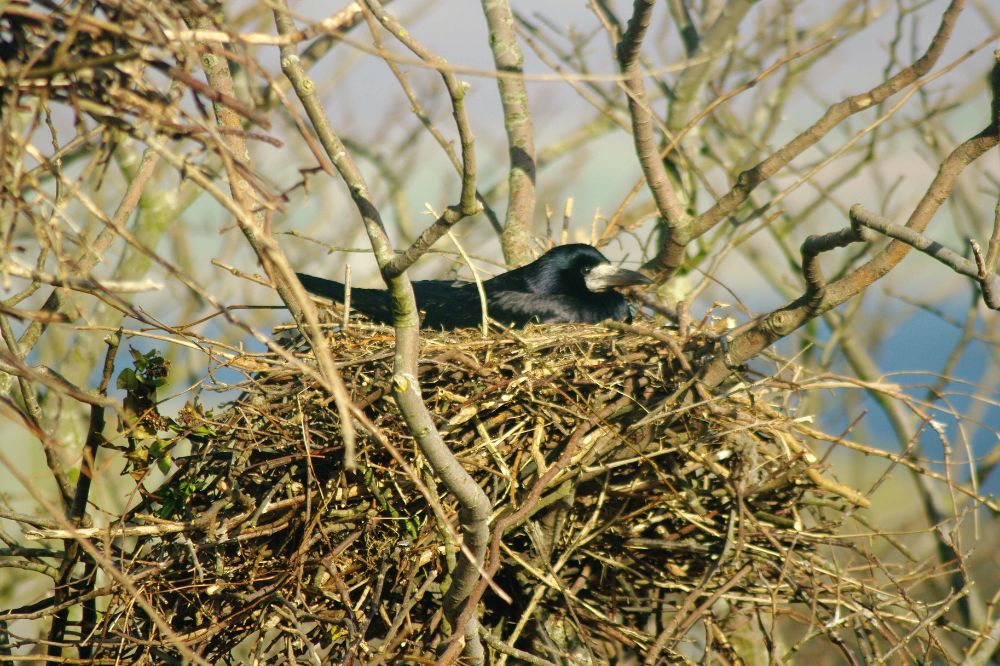The rooks of Hay on Wye: A passion shared

Emily Price
At the start of springtime, creamy primroses and lavender crocuses begin to bedazzle the slowing warming soil in a glorious spring fanfare on the lawn beneath a noisy rookery in the grounds of Hay Castle in Powys.
As I passed through in early February on a book buying splurge in the market town of Hay on Wye, I could see a group of tree surgeons readying ladders amid the cacophony of dozens of squabbling rooks above.
Concerned, I pointed up at the cluster of distinctly messy nests, and asked the intrepid group of tree climbers if they were preparing to remove the colony I have visited every spring for several years.
A woman smiled and said, “No, we are just checking the branches are safe as these trees are very old. Nothing will ever stop these birds coming back every year.”

Rooks are very sociable birds, I don’t think I have ever seen one alone. At the start of spring, the heavy set glossy black corvids gather at rookeries for the breeding season.
Known collectively as ‘a parliament of rooks’, their communal nesting sites found in the top branches of mature trees can consist of tens or even hundreds of nests.
They can be years or even decades old with the cluster gradually growing year on year as new generations of rooks carry in comically large sticks to expand their community.
As a young birder still at primary school, I became fascinated with rooks despite not actually seeing one until my late teens.
The South Wales Valleys may be brimming with jackdaws, jays and carrion crows, but rooks always seemed to elude me.
When I was 18, I took a road trip with friends to marvel at the dramatic ruins of Tintern Abbey on the banks of the River Wye.

As I gazed up at the roofless splendour of the monument founded in 1131 by Cistercian monks, two ominous black shapes sporting long pale and pointy beaks and wedge-shaped tails passed over above me.
They landed in a nearby mass of creaking oak trees loaded with their noisy pals – their dishevelled and ruffled plumage giving the impression that they were wearing baggy pantaloons.
I was absolutely captivated.
When I look back at the photos from that day all these years later, I can see that I took far more blurry images of my first ever rookery than I did of Tintern Abbey.
I even plucked a glossy blue black feather from the ground and proudly stuck it in my well worn WH Smith pocket guide of birds.

I still remember the din of that first colony I saw. To me, a rook’s hoarse croak – which they often make pitching their body forwards after landing – is far more friendly than that of a carrion crow or raven and far less harsh than the cheeky rattle of a magpie.
Ten years after seeing that first colony, I took my 6-year-old daughter to visit a small rookery I had found in some horse chestnut trees running along the stunning Monmouthshire and Brecon Canal as the first few hints of brown spattered the leaves.
With it being early autumn, the twenty or so nests had been left abandoned – the youngsters having fledged in early summer 32-34 days after hatching.
But the juvenile birds hadn’t gone far, choosing a nearby cricket pitch to poke out worms from the grass – their cleaner and less feathered legs setting them apart from their baggy trousered parents.
Rooks – like all corvids – are notoriously clever. Their extremely good memories allow them to bury or ‘cache’ food which they can retrieve later on.
At the start of springtime when tightly paired rooks begin their mad flurry of nest repairs in Hay on Wye, their clamorous squawks can be heard at separate hotspots around the town.
It is as though the castle’s main rookery has bled out into smaller tree clusters in the area with no distinctive start or end to the colony.
Last month, I was birdwatching down at Hay on Wye’s Warren – a local nature reserve popular with dog walkers and fellow birders – where a mini rookery lines the gardens of some rather lovely old stone cottages.
I saw a resident come out from his cottage to put some rubbish in the bin beneath a frenzy of rooks as the females bossily caw – cawed at the males as they clumsily brought in nesting material.
Before the man went back inside, he paused with his hands on his hips and looked up at the rowdy rabble of birds.
Chuckling, he shook his head. Despite the fact he was probably not getting much sleep, he too seemed charmed by his feathered neighbours.
I returned to visit the Hay’s rookery in late April. By this point the loud din had subsided to just the occasional croak.
Whilst browsing some antique books outside the Hay Cinema Bookshop, my daughter – now also enraptured by corvids – found a beautiful greeny-blue speckled egg shell which had seemingly tumbled from the sky before landing on a bench below.
As she turned it over carefully in her hands, I heard the iconic cackle of rooks above, one looked down at us, clearly pleased with the small gem it had booted out of its nest for us to find.
In mid-May, when the young birds are ready, they will ‘branch out’ – shuffling away from the safety of their nests to hop about in the upper branches on clumsy swaying limbs.

They will continue to be fed by their parents for several more days before fledging properly.
In the winter, they will join up with other corvids – particularly jackdaws – to roost together, sometimes performing impressive dusk and dawn displays which see masses of birds flock to make mesmerising dark shapes in the sky.
In the grip of mid-winter, some birds will be driven by instinct back to their ancient rookeries to begin the annual task of selecting only the best twigs to patch up nests that were first built decades ago.
Folklore would have us believe that the earlier rooks nest, the more likely we are to have a fine spring and summer.
But no matter the weather, by February my daughter and I will be back in Hay on Wye, steaming hot chocolates in hand, to watch the birds merrily begin their breeding cycle all over again.
Support our Nation today
For the price of a cup of coffee a month you can help us create an independent, not-for-profit, national news service for the people of Wales, by the people of Wales.




